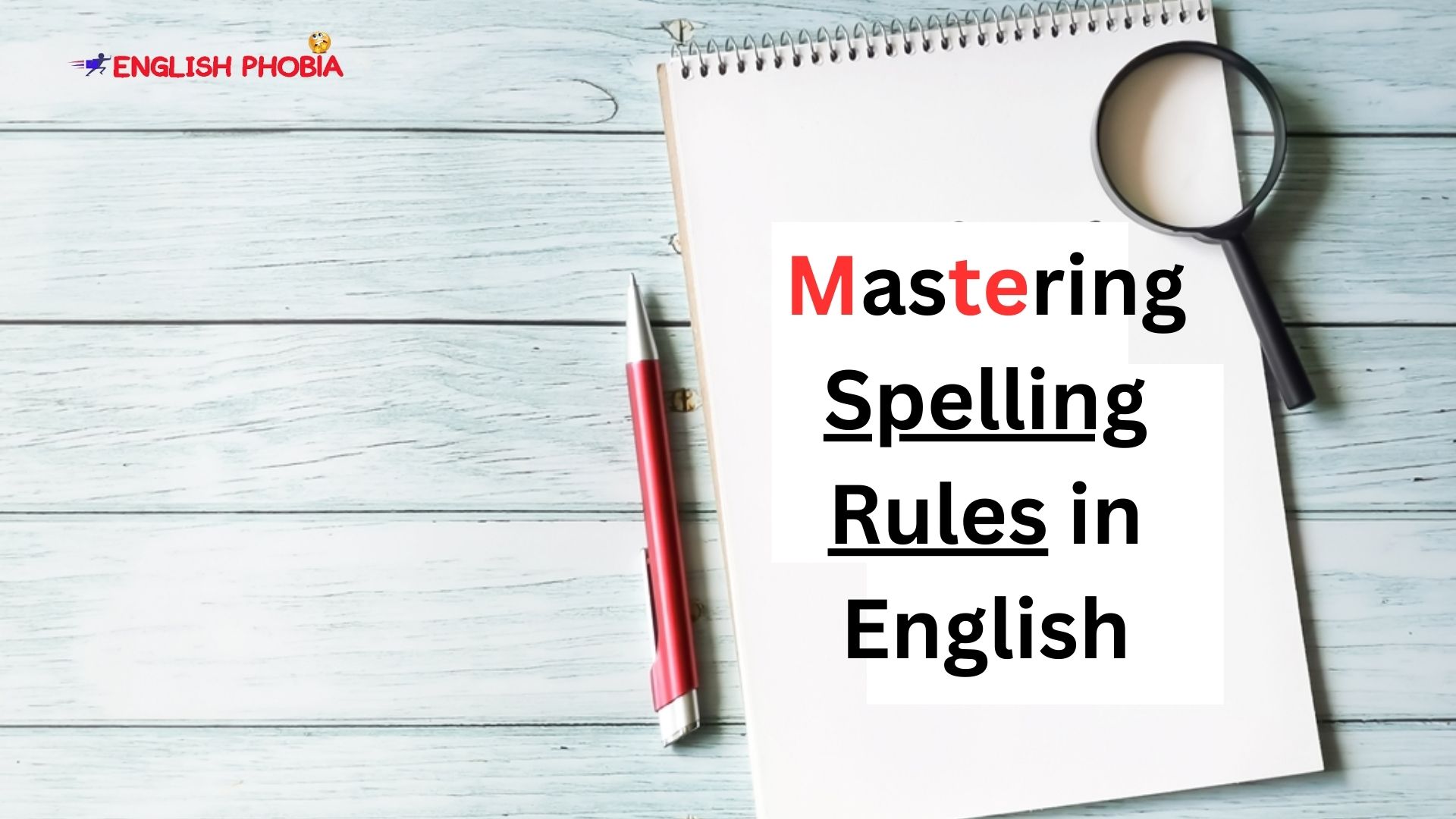Are you also bad at spelling? Were you ashamed because of incorrect spellings in your class? Accurate writing skill is an important aspect of effective communication. Spelling rules in English play a great role in writing. Learning spelling rules is very important in order to write correct spellings.
Writing is the result of a handful of tips to reduce spelling mistakes. Some of them are spelling rules. In this article, we are going to learn some spelling rules in English. We will also explore numerous examples to help you master the art of spelling.
1) A or An: We use ‘a’ before words that begin with a consonant sound and ‘an’ before words that begin with a vowel sound.
For example,
|
Consonant |
Vowel |
|
A minute |
An hour |
| A guava |
An apple |
|
A dog |
An umbrella |
| A tomato |
An onion |
| A task |
An effort |
2) I Before E, Except After C Spelling rules in English
This is one of the most confusing pairs of IE and EI in spelling rules. It is tricky to find out spelling errors in competitive exams.
For example,
– Believe
– Relieve
Here is the simple logic to answer all the questions based on this rule. Always use the “IE” pair in spellings. But be alert of spelling wherein you have to use this pair after the letter C.
We always use EI after C in spelling rules.
For example,
– Receive
– Ceiling
– Deceive
3) Plural Nouns Spelling rules in English
We often see plural nouns ending with the ‘S’ letter.
For example,
|
Singular |
Plural |
|
Boy |
Boys |
| Student |
Students |
|
Language |
Languages |
| Question |
Questions |
|
Learner |
Learners |
Is there any other rule apart from it? Yes, not all the nouns take the ‘S’ letter. We often add ‘S’ to form the plural of most nouns. But there are many nouns that take ‘Es’ to make them plural.
For nouns ending in s, ss, x, z, ch, or sh, add ‘Es‘ to make them plural.
|
Singular |
Plural |
| Bus |
Buses |
|
Miss |
Misses |
| Church |
Churches |
|
Crash |
Crashes |
| Box |
Boxes |
|
Quiz |
Quizzes |
There are also some nouns that do not follow any rules. These are some exceptions.
|
Singular |
Plural |
| Ox |
Oxen |
|
Mouse |
Mice |
| Child |
Children |
|
Person |
People |
| Man |
Men |
|
Woman |
Women |
4) Double Consonant Rule:
This rule is also known as the CVC rule in English. Here CVC stands for consonant vowel and consonant. When you see the same pair in the word at the end. We always double the final consonant and add ING to it. We also know it as the rules of adding ing.
Look at this double consonant rule word list below.
|
Cut |
Cutting |
| Put |
Putting |
|
Run |
Running |
| Commit |
Committing |
|
Hop |
Hopping |
| Cancel |
Cancelling |
5) Commonly Confusing Words:
There are a lot of confusing words in English. They may sound the same or similar but have different meanings and usage. We must take care of them before using them. These may cause spelling mistakes in your writing. Therefore be careful about them and learn how to use them.
Words that are frequently mixed up can cause confusion. Here are some examples for you.
– Effect (result), Affect (influence)
– Its (the possessive of adjective), It’s (contraction of it is)
– Lose (to misplace), Loose (not tight)
Conclusion
Mastering these spelling rules in English will undoubtedly improve your writing proficiency. Remember, practice makes perfect. Make an effort to apply these rules in your daily writing. Additionally, using Grammar checker online tools and proofreading can help catch any leftover errors. By following these guidelines, you will be well on your way to writing error-free. Happy writing!











